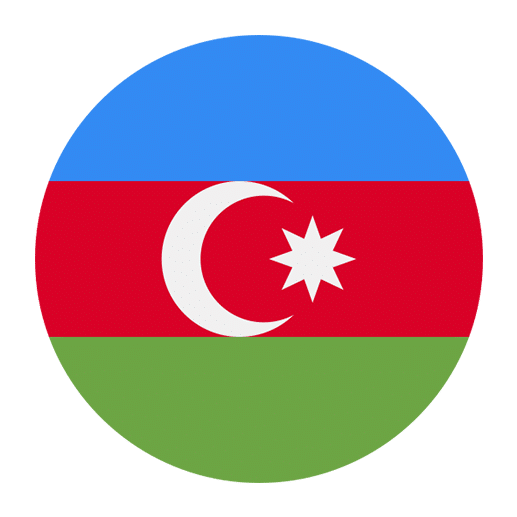Azerbaijani, also known as Azeri, is a fascinating language with a rich history and cultural backdrop. For English speakers venturing into learning Azerbaijani, understanding the basics of grammar is essential. One of the foundational aspects of Azerbaijani grammar is the distinction between singular and plural nouns. This article aims to elucidate the principles governing singular and plural nouns in Azerbaijani, providing language learners with the tools they need to master this essential aspect of the language.
Introduction to Azerbaijani Nouns
In Azerbaijani, nouns function similarly to those in English. They denote people, places, things, or abstract concepts. However, the rules for forming plurals differ significantly. While English often simply adds an “-s” or “-es” to the end of a noun to make it plural, Azerbaijani employs different suffixes and rules. Understanding these rules is crucial for constructing grammatically correct sentences.
Singular Nouns in Azerbaijani
Singular nouns in Azerbaijani are straightforward. Like English, they refer to a single entity. Examples include:
– kitab (book)
– uşaq (child)
– ev (house)
– qapı (door)
When using singular nouns, there are no additional suffixes or modifications needed. The word stands alone to represent one item or concept.
Definite and Indefinite Forms
Unlike English, Azerbaijani does not have definite or indefinite articles (like “the” or “a/an”). Context usually determines whether a noun is definite or indefinite. For example:
– Mən kitab oxuyuram. (I am reading a book.)
– Kitab masanın üstündədir. (The book is on the table.)
In the first sentence, “kitab” is indefinite, while in the second, it is definite, signified by the context provided.
Forming Plural Nouns in Azerbaijani
To form plural nouns in Azerbaijani, the suffix “-lar” or “-lər” is added to the end of the singular noun. The choice between “-lar” and “-lər” depends on the vowel harmony rules, which are a key feature of Azerbaijani phonology.
Vowel Harmony
Vowel harmony in Azerbaijani ensures that vowels within a word harmonize to be either front or back vowels. This harmony dictates the choice between the suffixes “-lar” and “-lər.”
– If the last vowel in the noun is a front vowel (e, ə, i, ü), you use “-lər.”
– If the last vowel in the noun is a back vowel (a, ı, o, u), you use “-lar.”
Examples:
– ev (house) → evlər (houses)
– uşaq (child) → uşaqlar (children)
– kitab (book) → kitablar (books)
– qapı (door) → qapılar (doors)
Irregular Plurals
While most Azerbaijani nouns follow the standard rules for pluralization, there are a few irregular nouns that do not conform to these patterns. These nouns often have historical or etymological reasons for their irregular forms. Unfortunately, the best way to learn these irregularities is through practice and exposure.
Some examples include:
– insan (person) → insanlar (people)
– şəxs (individual) → şəxslər (individuals)
Using Plural Nouns in Sentences
When using plural nouns in Azerbaijani sentences, it is essential to ensure that other elements of the sentence agree in number. This includes verbs, adjectives, and pronouns. Here are a few examples to illustrate:
Singular:
– Mən kitab oxuyuram. (I am reading a book.)
– Sən evdəsən. (You are at home.)
Plural:
– Biz kitablar oxuyuruq. (We are reading books.)
– Onlar evdədirlər. (They are at home.)
Notice how the verb changes to reflect the plural subject in the sentences above.
Adjective Agreement
In Azerbaijani, adjectives do not change form based on the number of the noun they describe. This is different from some languages where adjectives must agree in number and gender with the noun. For example:
– böyük ev (big house) → böyük evlər (big houses)
– kiçik uşaq (small child) → kiçik uşaqlar (small children)
The adjective “böyük” (big) and “kiçik” (small) remain the same regardless of whether the noun is singular or plural.
Possessive Forms with Plural Nouns
Possessive forms in Azerbaijani involve adding suffixes to nouns to indicate ownership. When dealing with plural nouns, the possessive suffixes are added after the plural suffix. Here are the possessive suffixes for reference:
– My: -ım / -im / -um / -üm
– Your (singular): -ın / -in / -un / -ün
– His/Her/Its: -ı / -i / -u / -ü
– Our: -ımız / -imiz / -umuz / -ümüz
– Your (plural): -ınız / -iniz / -unuz / -ünüz
– Their: -ları / -ləri
Examples:
– kitablar (books) → kitablarım (my books)
– uşaqlar (children) → uşaqlarımız (our children)
– evlər (houses) → evləriniz (your houses)
Common Mistakes and Tips
As with learning any new language, making mistakes is part of the process. Here are some common errors English speakers might make when dealing with singular and plural nouns in Azerbaijani, along with tips to avoid them:
1. Ignoring Vowel Harmony:
– Ensure you are familiar with vowel harmony rules to choose the correct plural suffix. Practice listening and repeating to develop an ear for these sounds.
2. Overgeneralizing Pluralization Rules:
– While most nouns follow the standard rules, be mindful of irregular nouns and exceptions. Regular exposure and practice will help you internalize these.
3. Forgetting Context for Definite/Indefinite Nouns:
– In the absence of articles, rely on context to determine whether a noun is definite or indefinite. Pay attention to sentence structure and surrounding words.
4. Not Adjusting Verbs and Pronouns:
– Ensure verbs and pronouns in your sentences agree in number with the nouns. This agreement is crucial for grammatical accuracy.
Practice Exercises
To solidify your understanding of singular and plural nouns in Azerbaijani, here are a few practice exercises:
Exercise 1: Singular to Plural
Convert the following singular nouns to their plural forms:
1. kitab (book)
2. uşaq (child)
3. qapı (door)
4. ev (house)
5. insan (person)
Exercise 2: Sentence Construction
Create sentences using the plural forms of the following nouns:
1. uşaq (child) → uşaqlar
2. qapı (door) → qapılar
3. ev (house) → evlər
Exercise 3: Context Clues
Translate the following sentences into Azerbaijani, ensuring correct use of definite and indefinite nouns:
1. I see a book on the table.
2. The children are playing outside.
3. We have many houses in the village.
Conclusion
Understanding singular and plural nouns in Azerbaijani is a fundamental step for language learners. By mastering vowel harmony, recognizing irregular plural forms, and ensuring grammatical agreement in sentences, you can enhance your proficiency and confidence in using Azerbaijani. Remember, practice is key. Regularly reading, writing, and speaking will help reinforce these rules and make them second nature.
Happy learning!

